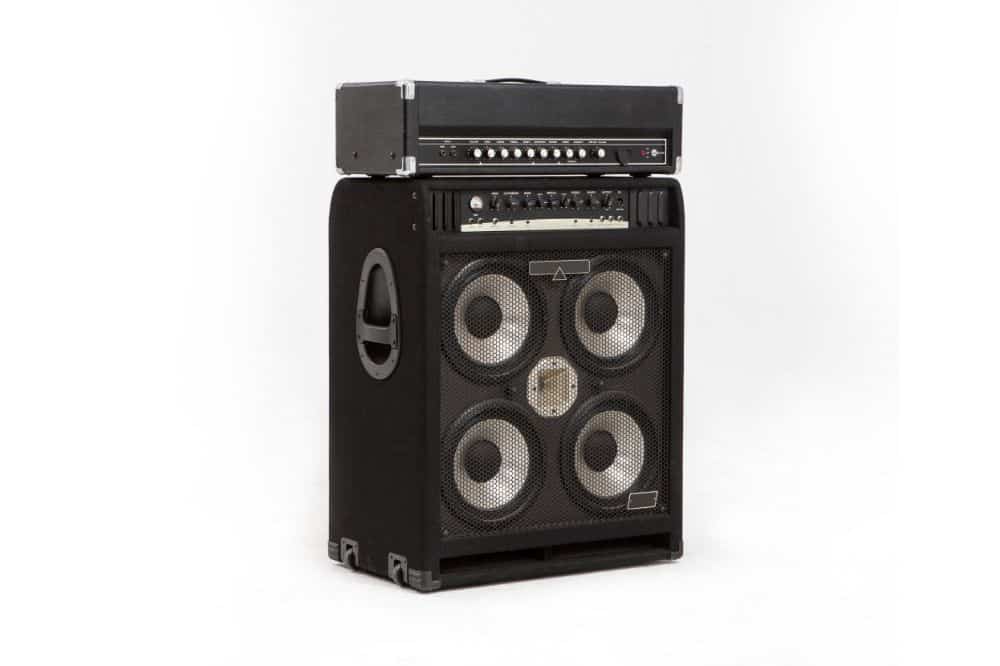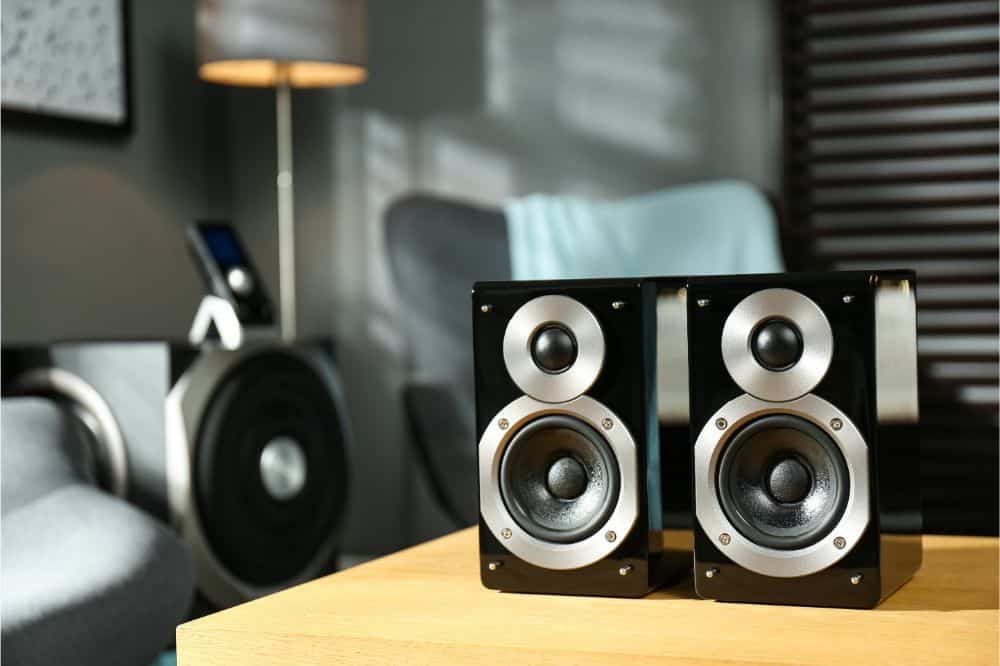Do you enjoy the rumble you hear when you watch explosion-filled movies or play action-packed video games? If you do, you’re probably gunning for the best output quality in your sound systems.
In one of our discussions, we presented the differences between powered vs. passive speakers. We also tackled how active speakers differ from these two.
To get your money’s worth, you must first understand the underlying differences between various speakers. Today, we shall cover powered vs unpowered speakers. Furthermore, we shall tell you which of these two types of speakers is best for the entertainment setup you require.
Powered Vs Unpowered Speakers
We hate to beat around the bush, and since we already have a segment about powered speakers and passive models, we’ll give you the gist.
The simplest way to state it is that a powered speaker has a built-in power amplifier, whereas an unpowered speaker has none. That’s it.
However, we should remind you that in the sound production industry, unpowered and powered speakers are often interchanged with passive and active speakers, respectively.
Before we delve deeper into the four types, let’s discuss what an amplifier does.
What Is a Power Amplifier?
As its name suggests, an amplifier amplifies something, and that something is an audio signal from a source component.
If you didn’t know, sound is generally a vibration comprised of waves propagating through a medium. However, sound waves have varying intensities, some of which are inaudible to the human ear or unhearable from a distance.
An amplifier is basically a power source that intensifies a sound wave signal by increasing its amplitude without distorting its waveform.
How Do Unpowered Speakers Produce Sound?
Since unpowered speakers do not have a built-in amplifier, they require a separate amplifier to produce quality sound.
Any passive speaker is essentially unpowered because of the lack of built-in amplification. Hence, interchanging between passive and unpowered is accurate.
Both types use passive crossover systems to deliver audio outputs, requiring an amplifier with pre-programmed optimization settings.
How Do Powered Speakers Work?
Powered speakers can stand alone, unlike unpowered models. They have a built-in power amplifier to intensify input signals and turn them into crisp and clear audio outputs. Each driver within the speaker would have an independent amplifier that receives signals from an active crossover network.
However, powered speakers are usually a misnomer if you think that all of them are active speakers.
An active speaker should use an active crossover filter network, which means signal inputs course through the network before amplification. Although they come with built-in amplifiers, many powered speakers use the passive crossover method by distributing signals after amplification.
Powered and Unpowered Vs. Active and Passive
A speaker’s powered or unpowered class indicates whether or not it has an internal power amplifier. On the other hand, its active or passive class tells you whether it splits input signals before or after they go through the amplifier.

Pros and Cons of Powered and Unpowered
Now that we have saved you from the confusion, we can start listing the advantages of both powered vs unpowered speakers.
Cost
Powered speakers are undoubtedly costlier than their unpowered alternatives, but with them, you wouldn’t need to purchase an amplifier separately.
Input Connections
Powered speakers allow the attachment and direct playback of any sound source, including a TV, an MP3 player, musical instruments, and others. You can also connect them directly to computers, which are now a necessity in the music industry.
On the flip side, unpowered speakers can only produce sound with an external amplifier. As such, you will have to connect your source components, gadgets, and instruments to the amplifier.
Space Requirements
Experts advise using the least amount of equipment necessary to accomplish a setup. If a powered speaker can do the same function as passive speakers with power amps, there is no need to use twice as much equipment.
Adaptability and Reliability
Increased equipment use increases the likelihood of increased equipment failure, which is not a desirable thing.
If you are utilizing four powered speakers in an event and one of them fails, nothing can destroy the show. Although you’ll lose some of your sounds, you can still go on performing with the other operable units.
However, even if you have four passive speakers and your power amp fails, this failure will ruin your entire performance.
Similarly, you run a twice as high risk of failing if you attempt to utilize a power mixer with passive speakers. If you’re using powered speakers and an unpowered mixer, the likelihood of your mixer blowing reduces exponentially.
On another note, powered active speakers break line-level inputs before amplification to produce undistorted sound.
Features From the Get-Go
Manufacturers continue to produce powered speakers with carefully calibrated power amps. This feature ensures powered speakers have the ideal power level to deliver clear audio outputs.
When using power amps with passive speakers, you should try to match the amp and speaker as closely as possible. Although most sound technicians can do this well, why take the chance?
Power amps won’t be an issue with powered speakers, and the speakers will sound better.
Flexibility
Unpowered speakers are more widely available than powered variants. They come in all forms and sizes, and you can combine various models from manufacturers. Of course, that is only possible if you can provide the required power amplification.
Quite the opposite, powered speakers often have a pre-determined set of unique features. For this reason, there is always so much hype whenever a brand new set of powered speakers brings something new to the table.
Size Matters
Another good thing about unpowered speakers is that the bigger they get, they’ll always have more space for additional or more oversized drivers.
Since an internal amplifier takes up space within a powered speaker enclosure, it sacrifices the driver sizes manufacturers can put into the cabinet.
In comparing bookshelf-sized speakers, you’ll find that the passive models have bigger drive units.
Purchasing Considerations
Suppose you’re ready to purchase a set of speakers. Let’s look at what you need to determine whether you’ll benefit more from either type.
Budget
As we have already mentioned, powered speakers tend to cost more than passive speakers of the same size. However, you’re better off getting a powered model if you don’t want the extra expense of purchasing a power amplifier.
If you have a good amplifier lying around at home, you definitely have more speaker options to choose from.
Technical Knowledge
Just understanding the key differences between passive, active, unpowered, and powered can be tricky. Imagine how much more you need to know to set up each type successfully.
If you’re hard-pressed on time and can’t wait to enjoy your entertainment, powered speakers are your best bet. They require fewer connections and straightforward installation.
However, be ready for information overload if you want to jump into all the inner workings and bifurcations of an unpowered passive network. Note that some passive speakers don’t pair well with some amplifiers. You’ll have to check compatibilities in impedance rating and power ratings.
Setting up mismatched speakers and amplifiers increases the chance of either not attaining the preferred sound quality or, worse still, blowing up the equipment. This mistake would provide a risk to local individuals as well as the machinery.
In many complicated setups, dealing with an array of passive speakers, amplifiers, and sound mixers may require the expertise of sound engineers.
Purpose
Aside from your budget, another crucial factor is your purpose for having the set of speakers. Are you considering it for your entertainment area at home, or do you want to host public gatherings in enormous rooms or wide open spaces?
Powered speakers are the best option for private purposes and personal sound systems. Since they are primarily standalone plug-and-play devices, all you have to do is connect the main speaker to your input source.
For more permanent setups, unpowered speakers are the buzz because you can tweak all settings from a single array of amplifiers or mixers. Although you might need enough space for the control units, you can minimize the number and lengths of speaker cable you need to lay out.
Portability
Next to purpose is portability. If you plan to set up a sound stage in various locations regularly, you might want to consider components having a lighter weight.
Since powered speakers and similar active models have integrated amplifiers, they are much heavier than unpowered variants. However, an independent power amplifier plus an unpowered speaker have a heavier weight combined.
Depending on the size, powered speakers can be the more portable option, as they wouldn’t even require additional equipment racks.
Making the Right Choice
Choosing the right speaker combination will depend on all the previously stated factors.
All things considered, a set of powered speakers is the best option if you require minimal setup and want to avoid the technical stuff.
Powered speakers are the most straightforward commodities in the sound trade and industry, and newer models continue to produce outstanding sound quality. With them, you don’t have to be an expert on all sound frequency settings, and you will still get the desired output.
However, a passive setup is the best way to go if you want to learn expert sound production. In the end, you’ll find yourself combining both powered and unpowered configurations to get the best results.

